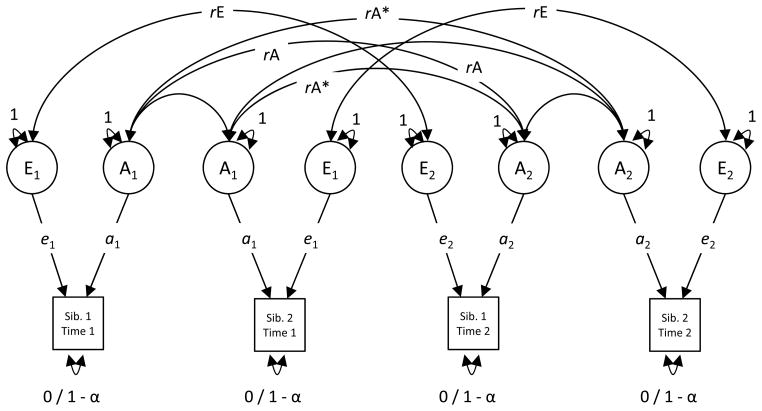Figure 2.
Longitudinal correlated factors model that decomposes variance in repeated assessments of personality into that due to time-specific genetic (A) and environmental (E) components, as well as the temporal stability of the genetic (rA) and environmental (rE) components. Interpretation of the parameters and modifications across sibling groups is the same as in Figure 1 with two notable exceptions. First, that the within-time correlation between genetic factors differs by sibling type has been removed from this figure, but is still essential for the model. Second and relatedly, the cross-time cross-sibling genetic correlation (i.e., the correlation between sibling 1’s A factor at time 1 and sibling 2’s A factor at time 2) is specified to differ by sibling type such that the expected correlation is scaled relative to the amount of shared genetic material between the siblings (i.e., multiplied by 1 for monozygotic twins and .5 for dizygotic twins, etc.). These genetic correlations have been marked with an asterisk. The within-sibling cross-time genetic correlation is equal to rA. Cross-sibling cross-time environmental influences are constrained to zero by definition.

